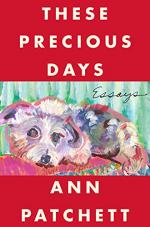|
This section contains 725 words (approx. 2 pages at 400 words per page) |

|
These Precious Days: Essays Summary & Study Guide Description
These Precious Days: Essays Summary & Study Guide includes comprehensive information and analysis to help you understand the book. This study guide contains the following sections:
This detailed literature summary also contains Topics for Discussion on These Precious Days: Essays by Ann Patchett.
The following version of this book was used to create the guide: Patchett, Ann. These Precious Days. HarperCollins, 2021.
Ann Patchett's These Precious Days is a collection of 24 titled essays, including an introduction and epilogue. Over the course of the collection, Patchett employs a range of forms, tenses, and linguistic stylings. The following summary streamlines Patchett's authorial range, employing the present tense and a linear mode of explanation.
In the introduction, "Essays Don't Die," Patchett considers her young adult fear of death. While writing novels, she realized that if she died her stories and characters would also die. By contrast, the essay has given her a sense of solace and peace.
In "Three Fathers," Patchett reflects upon her relationships with her three fathers, Frank, Mike, and Darrell. Although each man played a different role in Patchett's life, after their deaths, she realizes how much they all enriched her writing.
In "The First Thanksgiving," Patchett realizes that her Thanksgiving during her first year at Sarah Lawrence was a life-changing experience. The holiday taught her the importance of books in her life.
In "The Paris Tattoo," Patchett reflects upon hers and her friend Marti's trip to Europe as young women.
In "My Year of No Shopping," Patchett's decision not to shop for a whole year makes her realize how little she needs and how much she can give to others.
In "The Worthless Servant," Patchett interviews the living saint, Charlie Strobel, for an article she is writing. Her conversations with Charlie make her reflect on faith, goodness, and sacrifice.
In "How to Practice," after Patchett's friend Tavia's father dies, the friends sort through his house together. In the wake of this experience, Patchett decides to sort through her own belongings. The project teaches her about her sentimental nature.
In "To the Doghouse," Patchett considers how her childhood love of Charles Schulz's Snoopy influenced her writing life.
In "Eudora Welty, an Introduction," Patchett's second encounters with Virginia Woolf's and Eudora Welty's writings inspire her reflections on the relationship between books and time, time and realism.
In "Flight Plan," Patchett presents a series of anecdotes about her husband Karl's love of flying. Comprehensively, these fragments convey Patchett's deep love for her husband.
In "How Knitting Saved My Life. Twice," Patchett recalls how knitting helped her quit smoking and heal from her friend's death.
In "Tavia," Patchett cites her lifelong friendship with Tavia as evidence of friendship's lasting and transformative powers.
In "There Are No Children Here," Patchett presents a series of fragments regarding her decision not to have children. Together, these fragments explore the complexities of conveying one's reasons for not parenting.
In "A Paper Ticket Is Good for One Year," Patchett learns the balance between planning and impulsivity when she buys a last minute ticket to Europe.
In "The Moment Nothing Changed," when Patchett thinks her husband is dying, she realizes how much he enriches her life.
In "The Nightstand," after a stranger calls Patchett saying he found her old papers in a nightstand he bought, Patchett decides to go through her old letters, writings, and photographs.
In "A Talk to the Association of Graduate School Deans in the Humanities," Patchett describes the ways in which attending graduate school taught her the importance of community to an introverted writer.
In "Cover Stories," Patchett's fraught relationship with her novels' book jackets makes her realize the importance of protecting her work.
In "Reading Kate DiCamillo," Patchett is surprised to discover that DiCamillo's children's books remind her of the beauty, mystery, and complexity of childhood.
In "Sisters," Patchett recalls her lifelong relationship with her naturally beautiful mother.
In "These Precious Days," when Patchett befriends Tom Hanks's assistant, Sooki, she does not expect to make a lifelong connection. When she discovers Sooki has cancer, Patchett invites her to stay with her in Nashville to be closer to the hospital. The women foster a deep and meaningful connection.
In "Two More Thins I Want to Say about My Father," Patchett reflects upon her father's death in order to consider the relationship between grief and joy.
In "What the American Academy of Arts and Letters Taught Me about Death," Patchett's induction into the Academy makes her realize the inevitability of death.
In the epilogue, "A Day at the Beach," Patchett spends several days visiting with and saying goodbye to Sooki before her death.
Read more from the Study Guide
|
This section contains 725 words (approx. 2 pages at 400 words per page) |

|



